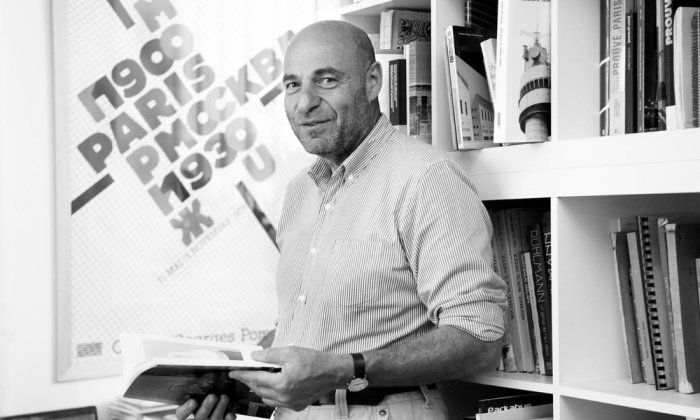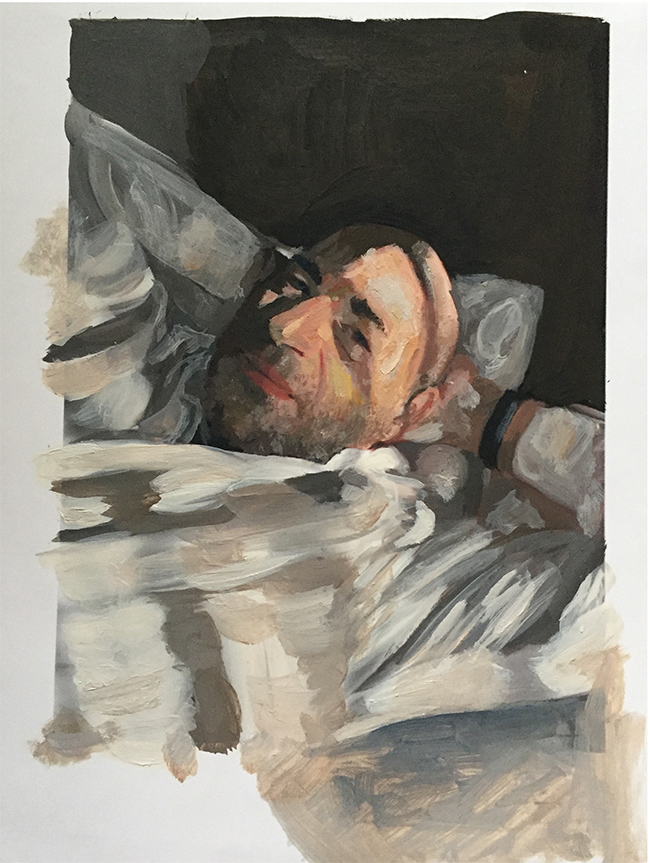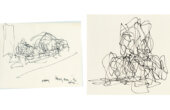Remembering My Friend Jean-Louis Cohen

Like many people in the architectural community, I am still having difficulty dealing with, or somehow even acknowledging, Jean-Louis’s absence and talking about him now in the past tense, for Jean-Louis was — frankly, he still is — central to an intelligent, engaged, collegial architectural culture, or at least to the same kind of culture that I would hope so many of us would want to belong. And inevitably, and paradoxically, in keeping him in the present I have been resorting to my memory.
In the months since his terribly sudden passing last summer (an end — through an encounter with a bee — imbued with an almost mythical ludicrousness; someone so big defeated by something so small), I have been thinking back on assorted conversations and collaborations I have had with Jean-Louis over the last 20 years or so: many chance encounters with him at assorted conferences (the kind of encounters and resulting conversations that made those conferences worthwhile) or through panels and presentations, or more typically prompted by essays and books of his that I was lucky enough to have edited and then published; the very last of which (the collected volume “Detroit–Moscow–Detroit,” that he co-edited with Claire Zimmerman and Christina Crawford), was delivered from the printer the very day he died.
When one aggregates all of these traces together, I think back now with a kind of amazement not just at the unshakeable enthusiasm Jean-Louis had for his chosen subject, but for the astonishing range of the man. Nothing, it seems, was off limits or unworthy of some considered piece of reflection; and architecture always seemed to exist for him just as easily, just as affectionately, as an idea as it did as an object.
In a wonderful eulogy to Roland Barthes, published after his death in 1980, Susan Sontag wrote that:
After a tardy start there were many books, many subjects. One felt that he could generate ideas about anything. Put him in front of a cigar box and he would have one, two, many ideas — a little essay. It was not a question of knowledge (he couldn’t have known much about some of the subjects he wrote about) but of alertness, a fastidious transcription of what could be thought about something, once it swam into the stream of attention. There was always some fine net of classification into which the phenomenon could be tipped.
For someone who had his first professorship in his early 30s and an endowed chair in architecture at NYU when he was still in his 40s, Jean-Louis’s own passage through French and then global architectural academia could hardly be described as tardy, but it was not until 1992 that he published his first major book, on the mysticism that Le Corbusier held for the USSR. But then seemingly released by this title, he absolutely detonated as a scholar, passing his own fine net of classification over so many different figures and histories. He wrote so frequently and so fluently that perhaps the only catalogue he did not consider was his own. In hindsight now, one can see that across his entire bibliography he always somehow balanced his loyalty to an architectural canon — to Le Corbusier (who he wrote about so often even if he would often admit that the architect also bored him), Mies, Auguste Perret, André Lurçat, and then later to more contemporary figures like Paolo Mendes da Rocha and Frank Gehry; and to a canonic way of presenting architecture, typically as a survey history — with a parallel subversiveness that saw him attack certain colonial myths in Algeria and North Africa, or more usually to an appealing kind of push-pull cross-pollination between opposing architectural theologies, often between modern and anti-modern, or between the global and the local, or still more frequently — perhaps his favorite, even signature move — between overlapping moments in the identities of East and West, or to interesting glitches of East-ness in the otherwise even trajectories of West-ness.
One of the more tedious conventions of academia is that depth has seemingly always been valued more highly than breadth, and that we should aspire to teach or write about a limited historical or geographical frame with ever increasing introspection. Jean-Louis’s amazing catalogue of works, and amazing mind, defeats such a model, and in some sense shows him to be more of a curator than a conventional academic, with each year, each season even, bringing with it a new, different subject and attendant cast of characters, images, and ideas.

And perhaps my own personal favorite Jean-Louis Cohen project was a wholeheartedly curatorial one, the French pavilion he curated at the 2014 Venice Architecture Biennale, in which he re-made (with very little fanfare or advance warning, in hindsight so as to preserve the joke) a large-scale model of the absurdist modernist house from Jacques Tati’s 1958 film “Mon Oncle” as a lens through which to assess the legacy of modernism in France. To be in a darkened pavilion interior, in the otherwise rather serious, even sacred array of other pavilions in the Venetian Giardini, surrounded by other visitors similarly smiling and giggling at the charm and intelligence of what he displayed was just such an appealing way to consume an architectural idea. In the process, Jean-Louis — someone so thoroughly engrained in all of the nuances and complexities of architectural history and discourse — was willing to temporarily abandon his expertise and present an idea instead through the guise of the ultimate layman Tati, and with it was able to imbue architecture with an infectious kind of humor and humanism.
And indeed, when I think of Jean-Louis now it is not necessarily through the more abstract metrics of his intelligence, nor through the sheer extent of his bibliography, or via an itemized list of his courses or exhibitions, but for his very obvious human qualities. Jean-Louis had a sense of humor, for sure, but more than anything else I think he should be celebrated and cherished for his kindness and unstinting generosity. Like the lion surrounded by bees on the logo of the English Lyle’s Golden Syrup, we might even borrow the same tagline for Jean-Louis Cohen’s legacy, “Out of the strong came forth sweetness.”
Thomas Weaver is Senior Acquisitions Editor for Art and Architecture at the MIT Press.



